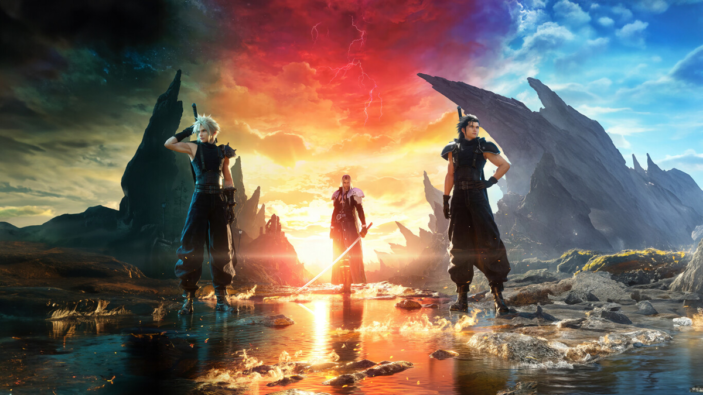
When the Final Fantasy VII remake was initially announced, you could say it broke the internet. That original 1997 game changed the gaming landscape forever and hearing that it would be released to a new generation on a new platform made you feel like you were witnessing the second coming of Christ in gaming pop culture form. The result was a 2020 release that had a gorgeous modern coat of paint and gameplay but remained divisive among fans and critics alike for its heavy linear gameplay and story choices.
Final Fantasy VII Rebirth aims to tackle any remaining complaints, as any good sequel should. For the most part, it does so splendidly at its peak moments. However, it retains some of the issues seen in recent mainline Final Fantasy games, as well as its predecessor. Make no mistake; Final Fantasy VII Rebirth feels like the reboot we should have received instead of 2020’s first chapter. Yet, it falls short of delivering a flawless experience by the modern standards of open-world gaming in 2024.
The Fellowship of the Lifestream Assembles
Kicking off right when the last game ended, Cloud and our gang of heroes come out of the industrial city of Midgar and are determined to save the world by traversing it and unlocking the mysteries behind the whispers and Sephiroth, as well as Shinra.
Three new playable additions to the party join the fray, or two if you didn’t play INTERmission DLC. Red XIII, Yuffie, and Cait Sith join the party with Cloud, Barret, Tifa, and Aerith. All three of these new characters have very unique play styles. They’re certainly no pushovers and are supported by tutorials from Chadley that let you learn and master what makes them tick just like every other original party member.
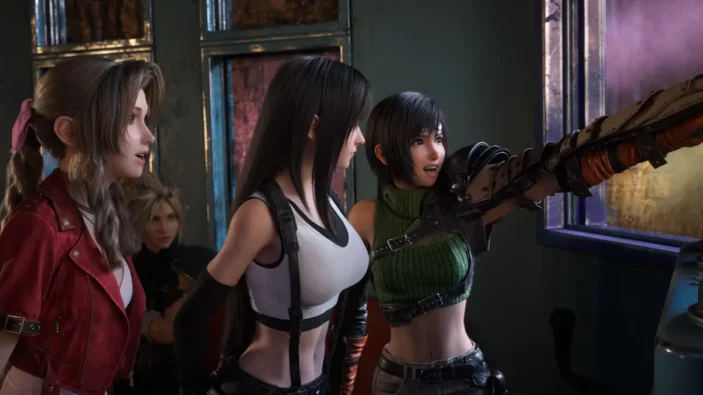
As someone who clocked over 90 hours in the original PlayStation game and consumed all the compilation of Final Fantasy VII content like Crisis Core and Advent Children, the modern retelling of the Final Fantasy VII story remains a cinematic gem that is enthralling to see more fleshed out in Rebirth.
Yet if you felt like the writing of Final Fantasy VII Remake was too cheesy, anime, teenage angsty, Rebirth doubles down on that for the most part. The waifu dating aspect of Cloud getting to know Tifa and Aerith returns, as well as all the anime visual novel bants between him and everyone else in the party. Choosing to speak with your characters separately when they’re all galivanting on their own in a new town raises your bond with them leading to a happier and shifting coloured face above their character model showcasing how much your Cloud really cares about his mates. Yet for every scene that goes a bit too overtly cute or exaggerated like a sci-fi spin-off of K-ON!, Rebirth doesn’t shy from being more serious and nuanced in its drama, especially in some of the plot’s biggest character reveals and moments.
But there is a lot to contend with and a lot of it isn’t subtle in storytelling execution. Many characters go out of their way to be cute and funny in theatrical and exaggerated performances. You will be hard-pressed to feel like every character in the party gets their equal treatment of reverence in the story, while others put you into scenarios where you feel like plot devices are forcing you to really feel a certain way towards a key character or Turk before the story shuffles you onwards to the next big set piece.
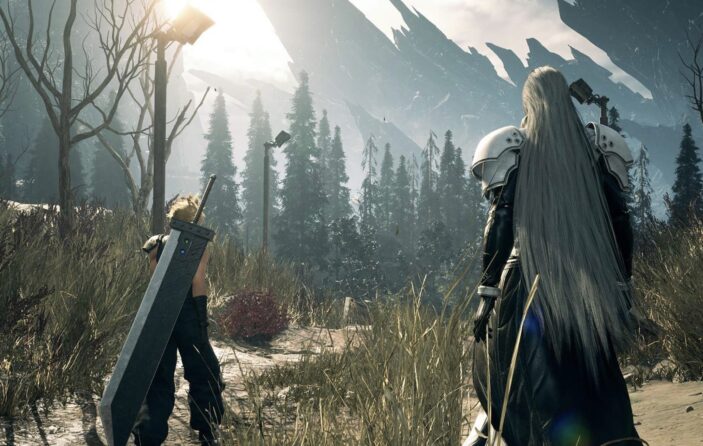
Regardless, there’s still an endearing charm to it all that drew us back in 1997 which carries through to this day. In a world where there are feral monster houses on legs, a lion tiger English-speaking canine, and dolphins keen to help you topple a mega-corporation, one could argue Nomura and the Square Enix team simply embraced just how whacky and ridiculous Final Fantasy VII was at the time and just went full throttle with it.
Advent Children Combat in the Palm of Your Hands
Final Fantasy VII Rebirth maintains the successful hybrid active-time battle system from Remake, with additional features enhancing gameplay depth. Basic attacks, combos, and character abilities are seamlessly integrated with the ATB system, allowing for a variety of special tactics. Exploiting enemy weaknesses fills a stagger meter, enabling powerful attacks. Synergy Abilities introduce teamwork dynamics, rewarding coordinated play. Overall, Rebirth offers satisfying squad combat with exhilarating animations and sound effects.
Similar to Remake, you’ll control a maximum of three characters in battle, while the remainder of your party can be seen assisting in the open world, occasionally contributing attacks. Though their impact may seem minimal, under certain circumstances, they can execute synergy attacks, providing additional firepower or support to your active characters during intense battles.
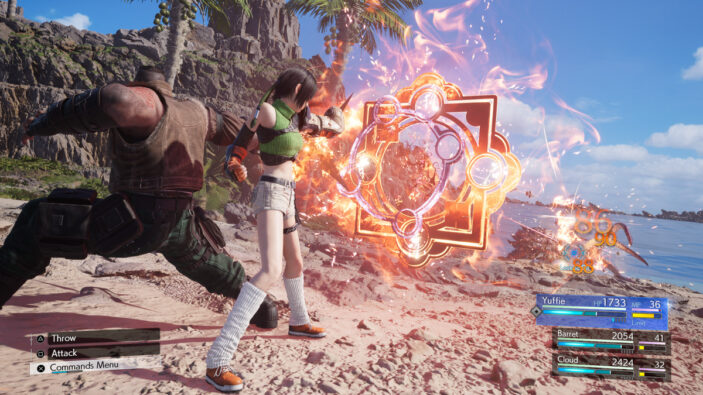
Character customization in the game now features an expanded perk tree system reminiscent of Final Fantasy XV or Final Fantasy X’s skill trees. Progression is tied to a party XP level, which unlocks new skills and stat boosts. Party XP is separate from each character’s XP for levelling up and is earned by defeating story bosses or completing quests. Skill points are finite and are used to unlock nodes in the tree, each costing varying amounts. Nodes branch into different specialties for characters, and they can be reset individually, allowing for flexibility as party levels increase.
Mini Games Yahoo: Electric Boogaloo
Just like the original, Final Fantasy VII Rebirth offers over 15 different mini-games that break up and pad your various adventures. The variety of gameplay on offer here is simply insane. Highlights include a piano rhythm game where you play many OST classics, faithful recreations of originals like Chocobo Racing return, along with mini-games like Fort Condor and Rebirth’s Pride and joy, Queen’s Blood.
The Lifestream’s trading card game of choice, Queen’s Blood can be seen as a spiritual evolution of Final Fantasy VIII’s Triple Triad. It’s the MTG/Yu-gi-oh of the Final Fantasy VII populace and every person and their dog (or Chocobo) knows how to play it. You’ll meet new opponents, win cards off them, and buy new booster packs within every new town as you raise your champion status and uncover a fun little conspiracy with this card’s creator. It’s immensely satisfying and easy to play, with an immense amount of tactical depth that makes for few cards in its diverse card list that would carry you throughout the whole game.
Yet not all mini-games are made equal. Some feel harder or easier than they should, others feel like utter chores or contrivances, and worst of all, the meaningful impetus of a new weapon or super rare Materia as a reward to attain top rank from these games is not nearly as consistent in inclusion as other open world games or even the original Final Fantasy VII game where I slaved away for hours on certain mini-games in order to get that rare armlet or Materia.
Global Adventure
Everyone who felt extremely cramped in the linear Midgar depths of Remake will rejoice. In Rebirth, Cloud and friends can finally traverse the open world (for the most part). There are 6 regions for you to explore containing iconic locales of the original games like Mount Corel and Gold Saucer. There are also the usual linear levels where you travel through caves and corridors between chapters where fast travelling across and within regions is disabled.
The issue of prioritizing quantity over quality extends to the side quests and world-map tasks scattered throughout Rebirth’s world. While numerous quests are available in every town and city, only a fraction offer meaningful rewards or story reveals. While some quests stand out, many lack consistency in their interest or rewards. However, Rebirth’s side quests generally fare better than Remake’s, with a higher hit rate in terms of memorable experiences.
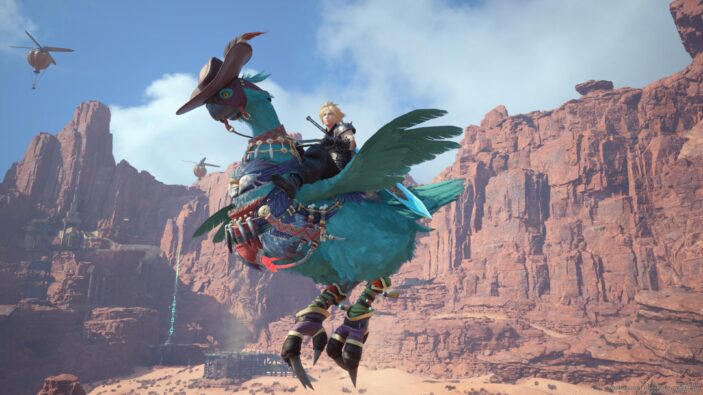
Things like Intel Towers and Combat Assignments are exactly what you’d think they’d entail if you played The Legend of Zelda: Breath of the Wild, Horizon: Zero Dawn or Forbidden West, or any Ubisoft open-world game. However, not all tasks offer equally meaningful rewards, leading to repetitive busywork for the sake of busywork. Quick travel via Chocobo is essential, but taming local Chocobos in each region can become tedious.
Other culprits include having to find all divine investigation spots per region to get the most powerful version of your summon materia, herding Moogle back to their home every time I find a new Moogle house in a new region where I just want to spend my moogle medals and be on my way. While games like The Witcher 3: Wild Hunt and The Legend of Zelda: Tears of the Kingdom excel in providing consistent fulfilment in side quests, Rebirth struggles to capture the same magic.”
Graphical Prowess
Final Fantasy VII Rebirth presents an extravagant visual buffet of what the PS5 can really do. Yet gluttony has its price. At 4K 30 FPS fidelity mode, you’ll get big frame drops in battles when things get busy in the effects department. The 60 FPS performance mode hovers between this strange uncanny valley of 1440p and 1080p where everything looks a bit more blurry than it should be even with the day one patch installed and dynamic resolution enabled. Apparently, it’s because of a harsh post-processing algorithm that is more brutal than the 1512p output in performance mode from Remake though I’m sure future patches can address this.
Thanks to its art direction and design, Rebirth has some of the most detailed lighting and models you’ve ever seen. The fully rendered CGI cutscenes are probably the most gorgeous video game movies I’ve ever seen to date. The in-game cutscenes are no slouch either. Yet you will still be getting some noticeable low-res texture on the odd close-up object where everything else in its vicinity looks as crispy as it can get.
Final Thoughts
Final Fantasy VII Rebirth is a dense compilation of multiple gaming experiences, offering over 100 hours of gameplay with extensive side quests and main story completion. Like its predecessor, Rebirth dances that fine line between fan service and innovation, often compromising between the two. This ambition is amplified in its epic open-world scale and intricate storyline. While it delivers exciting and shocking moments that reward fans, there are instances where it feels like filler rather than meaningful storytelling, reminiscent of its predecessor.
Coupled with some of the finest action RPG gameplay out there, stellar graphics and quality music this industry has to offer, Final Fantasy VII Rebirth is a much-appreciated sequel and signals a promising taste of what the finale of this trilogy can become. I just wish there was more quality control across so many flavours imbued in this behemoth of video gaming pie.
THREE AND A HALF STARS (OUT OF FIVE)
Highlights: Incredibly fun combat system; Unique minigames; Generation-defining graphics
Lowlights: Mini-game and side quest quality consistency isn’t always there; Campy and cheesy story may not be everyone’s cup of tea
Developer: Square Enix, Creative Business Unit I
Publisher: Square Enix
Platforms: PlayStation 5
Available: Now
Review conducted on PlayStation 5 with a code provided by the publisher.
